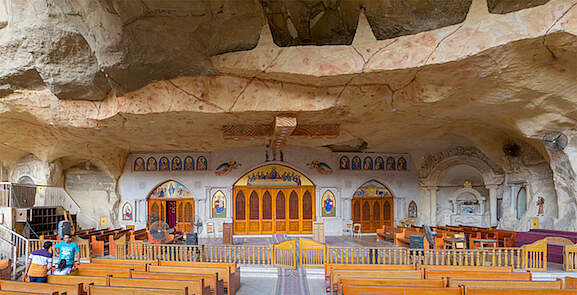
At that time in Egypt, Governor Al-Mu'iz Li-Din Illah (932-975) was keenly interested in religious controversies. He regularly gathered religious leaders from Muslim, Christian and Jewish communities to debate in his presence.
A member of Al-Mu'iz's entourage offered a challenge for the representatives of the Christian and Jewish communities. On this occasion, it was suggested to the caliph to test the Christians on a verse of the Gospel of St Matthew (17:20): Amen, I say to you, if you have faith the size of a mustard seed, you can say to this mountain, ‘Move from here to there,’ and it will move. Nothing will be impossible for you.
Caliph Al-Mu'iz summoned Amba Abram the Syrian, and told him to prove that the words of Christ were true and the Christian religion right, by moving the hill of Mokattam towards the East, which would allow the extension of the new city of Cairo.
If Amba Abram refused, or proved unable to achieve this feat, the Christian community would have to choose one of the following alternatives—either to convert to Islam or to leave Egypt. The shocked patriarch asked for, and obtained from the caliph, a delay of three days before giving his answer. He prayed to God to inspire him, and called on the Coptic people and the entire Church of Egypt to fast with him for three days and to pray earnestly that the challenge be dropped. On the third day at dawn the Virgin Mary appeared to Amba Abram in a dream and said to him, "Do not be afraid, faithful shepherd ... the tears you shed in this church, the fasts and the prayers you offered have not been in vain. Get up and go to the iron gate that gives access to the market. There you will find a one-eyed man (Saint Samaan, the tanner, well known among Copts of his time) carrying a jar of water. It is through him that the miracle will take place."(1)
(1) Story to be continued on November 19, 2018
According to the Biography of Saint Samaan the Shoemaker, published by Saint Samaan Church, in Mokattam, Cairo (Egypt)
Excerpt from an article by Mohamed Salmawy published in AL-AHRAM Hebdo, Week of March 8-14, 2000